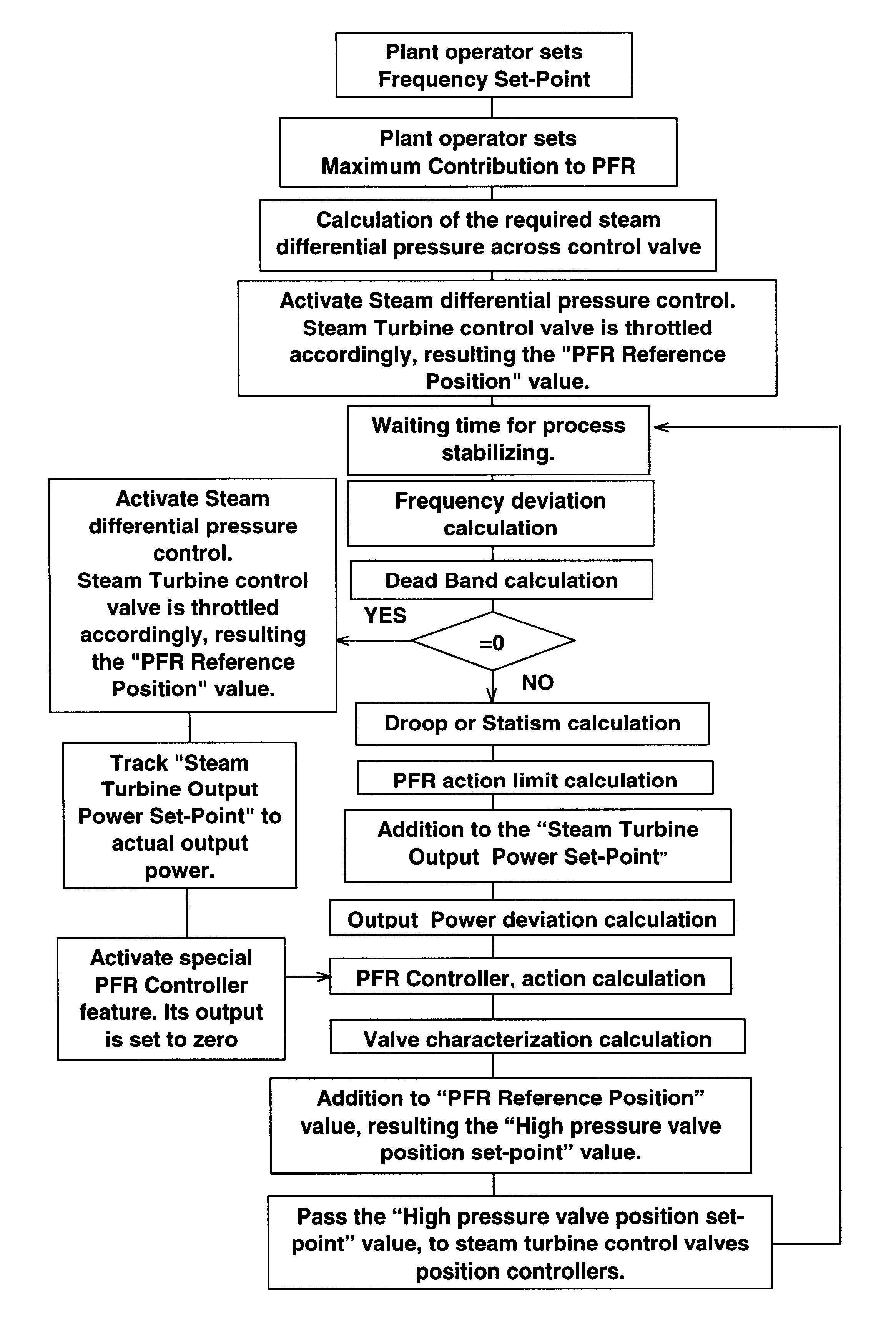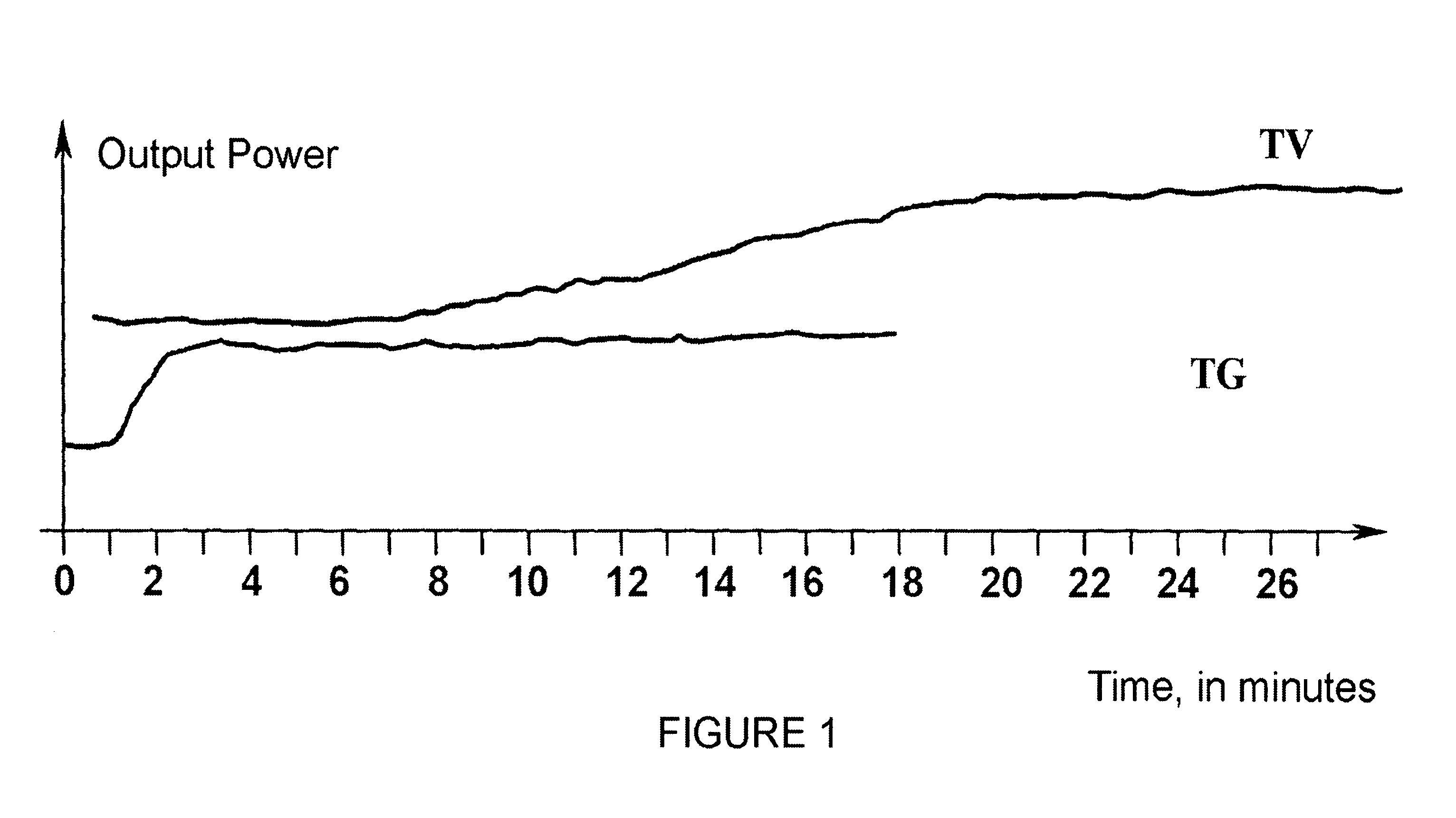Primary frequency regulation method in combined-cycle steam turbines
a technology of combined-cycle steam turbines and frequency regulation methods, which is applied in the direction of steam engine plants, combined combustion mitigation, jet propulsion plants, etc., can solve the problems of not being able to adjust the amount of energy, the response time of this order of magnitude is not useful to achieve pfr, and the problem of steam turbines in combined-cycle with gas turbines posing a quite different problem
- Summary
- Abstract
- Description
- Claims
- Application Information
AI Technical Summary
Problems solved by technology
Method used
Image
Examples
Embodiment Construction
FIG. 4 illustrates a general block diagram of the method, and FIG. 5 is a flowchart showing the steps of the method.
The plant operator must in the first place fix the value of two parameters according to the requirements. One of these parameters is "Frequency Set Point." Frequency Set Point is the desired value for frequency, which normally is set as the rated frequency of the system. The second parameter that the operator must determine is "Maximum Contribution to PFR". Maximum Contribution to PFR is the absolute value of the maximum output power that PFR will contribute to control the mains frequency. This second value is determined by the operator on the basis of the local regulatory requirements for PFR in the system.
Once the "Maximum Contribution to PFR" value has been set, the block "Reference Position for PFR" calculates the degree of throttling of the control valves that is necessary to obtain such an increase in output power, whenever needed. In order to determine the throt...
PUM
 Login to View More
Login to View More Abstract
Description
Claims
Application Information
 Login to View More
Login to View More - R&D
- Intellectual Property
- Life Sciences
- Materials
- Tech Scout
- Unparalleled Data Quality
- Higher Quality Content
- 60% Fewer Hallucinations
Browse by: Latest US Patents, China's latest patents, Technical Efficacy Thesaurus, Application Domain, Technology Topic, Popular Technical Reports.
© 2025 PatSnap. All rights reserved.Legal|Privacy policy|Modern Slavery Act Transparency Statement|Sitemap|About US| Contact US: help@patsnap.com



